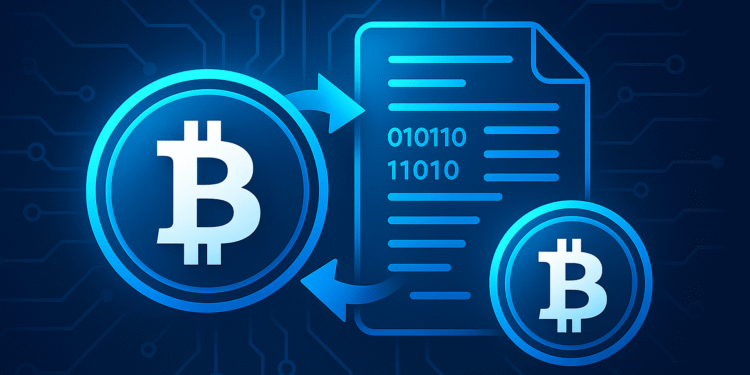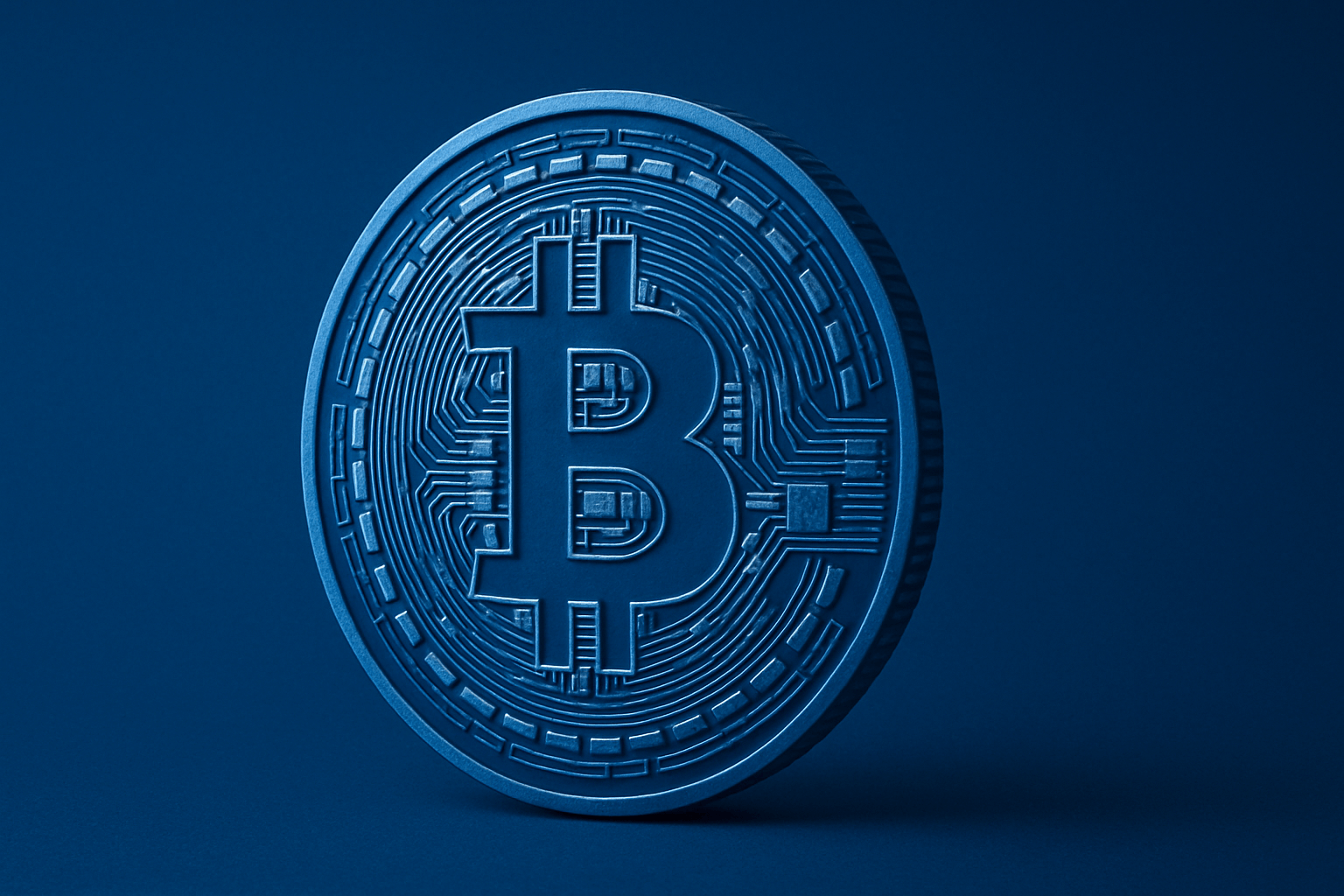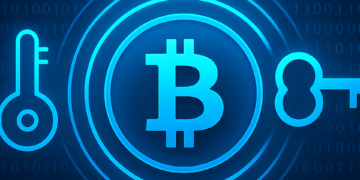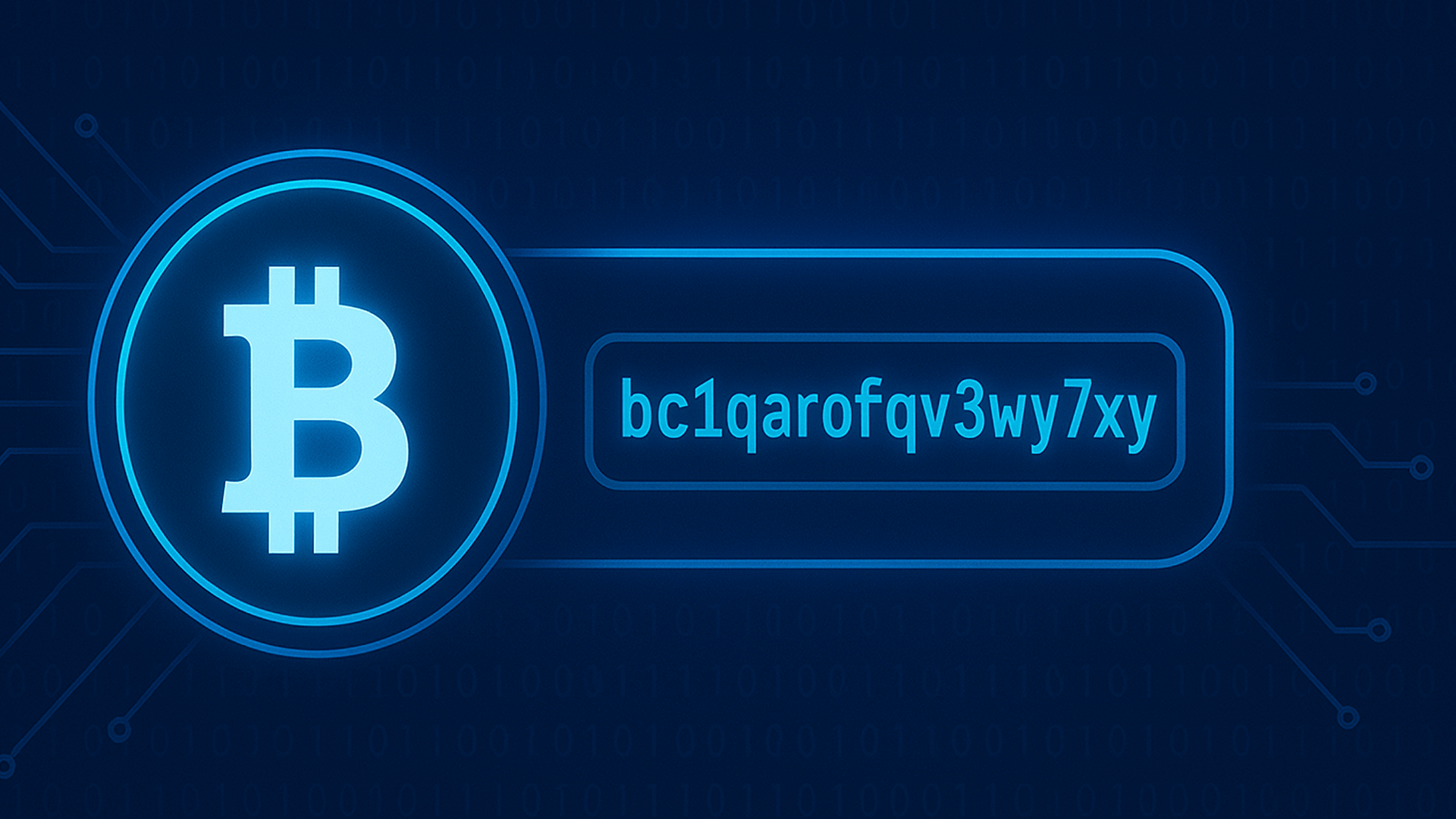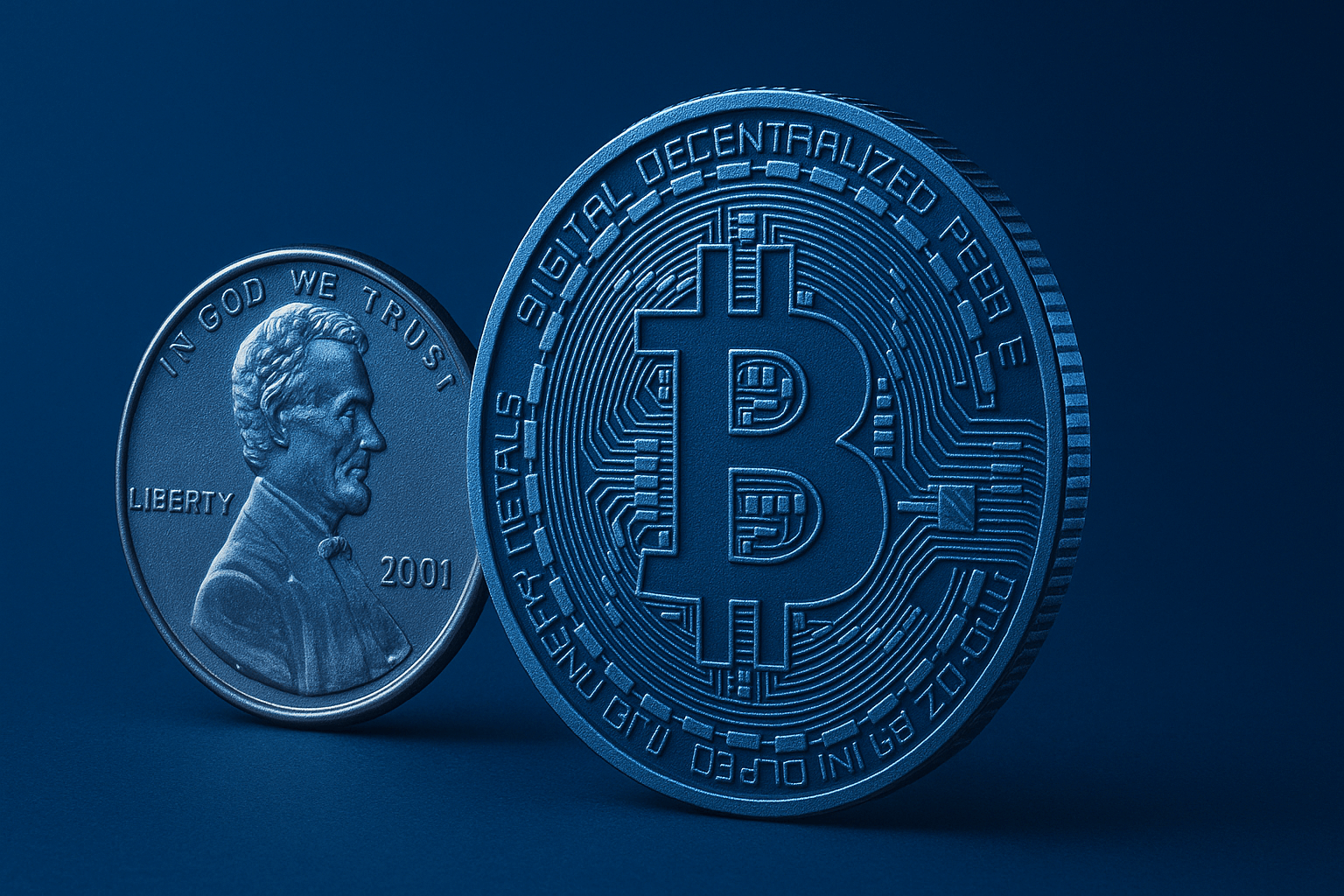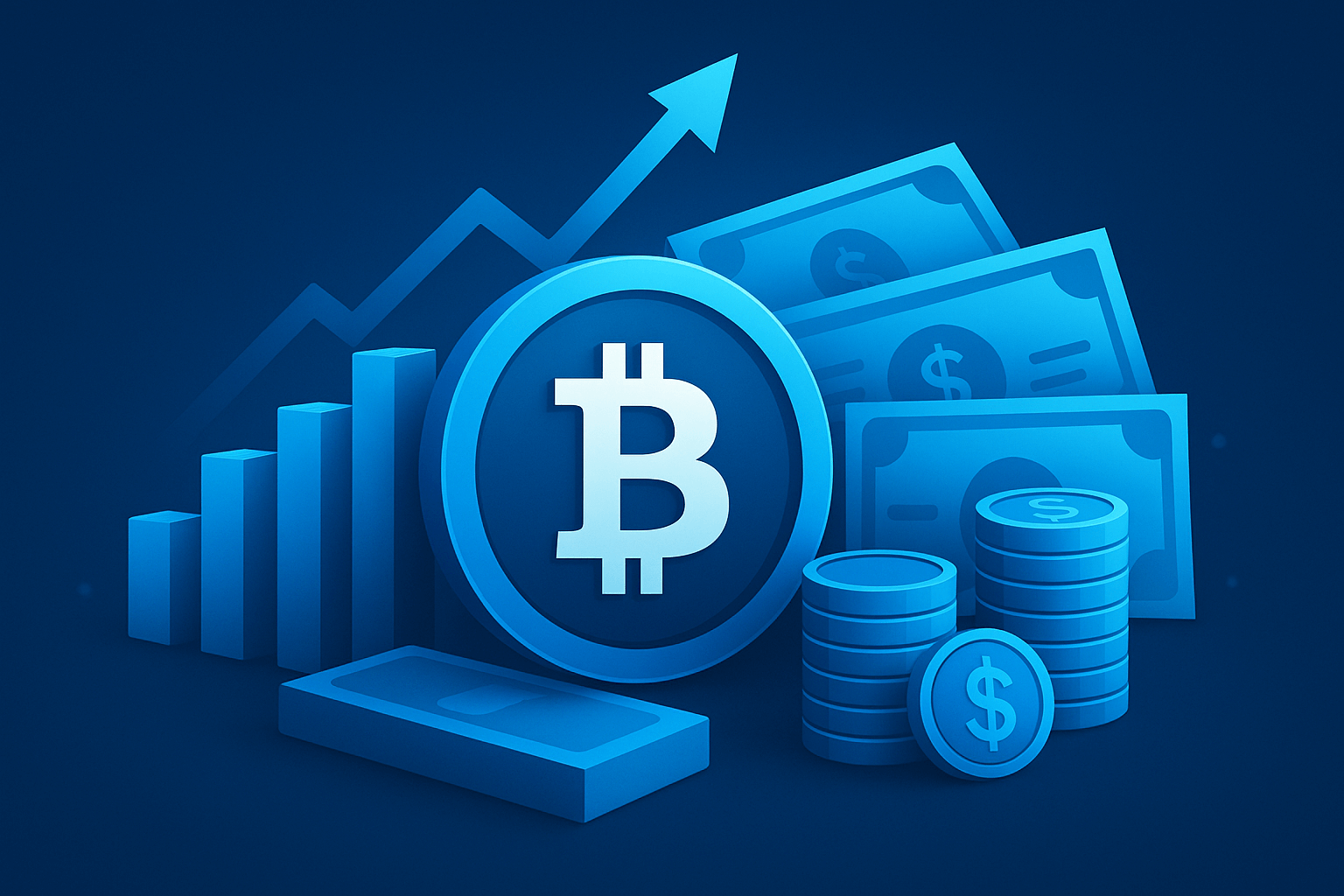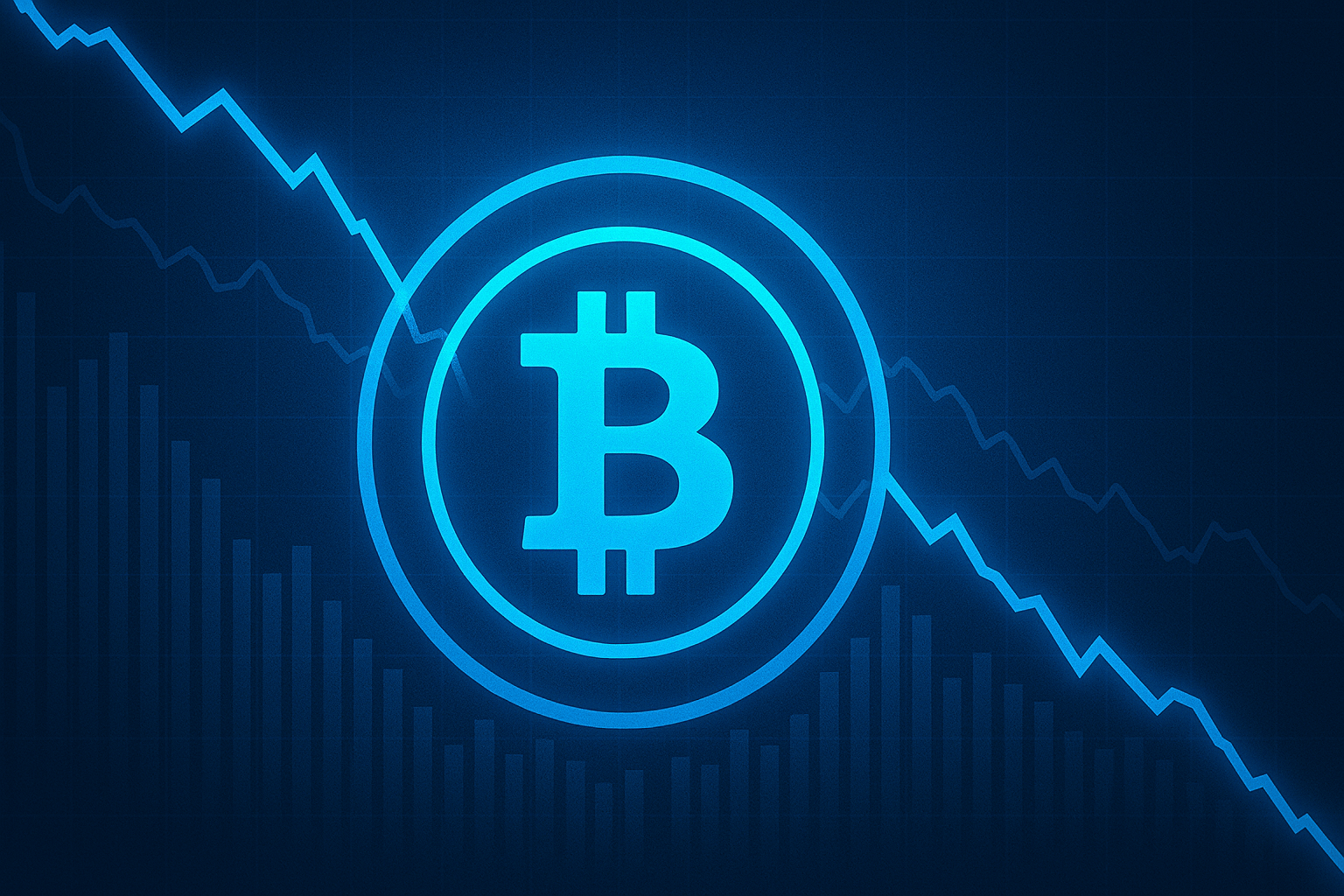Every on-chain payment is a small story: a signature proves spending rights, the network checks that story, and miners publish it in a permanent ledger. As demand swings and block space remains finite, the way you build and price that payment can mean a smooth next-block inclusion or a long wait. Learning how transfers are assembled, why fees change minute to minute, and which tools can rescue a stuck transfer makes the difference between a confident user and a frustrated one. This guide blends plain-language explanations with hands-on tips, examples we tested, and links to independent data sources so you can navigate 2025’s fee market with clarity and calm.
What a Bitcoin transaction really is
A transfer on the network is not a bank-style debit from an account. It’s a message that consumes specific “coins” you already control and creates new destinations with rules about who can unlock them next. These “coins” aren’t coins in the pocket sense; they’re references to prior outputs that were never spent. When your wallet signs a transaction, it proves you have the right to use those unspent pieces and assigns new ones to someone else or back to yourself as change.
This model is called UTXO: unspent transaction outputs. Think of each output as a sealed envelope with a precise amount and a lock. Your private key can open certain locks. A new payment cuts open some envelopes you hold, then seals fresh envelopes addressed to the recipient and to you for the leftover amount. The rules about the lock—what public key, what script—are visible to everyone, while your private key stays off-chain.
Inputs, outputs, and change explained
Inputs are pointers to previous unspent outputs. Each input says, “I’m spending output number X from transaction Y,” and includes the unlocking data proving you can open that lock. Outputs are the new envelopes: each has an amount and a locking condition (a small script) that defines who can spend it later. If the total of your inputs is larger than the amount you want to send, your wallet creates a change output back to an address you control.
Leaving out change doesn’t make you generous by default; it just turns the difference into a fee. Good wallets build change output(s) automatically and round the fee to a target rate so you don’t tip miners by accident. In practice, most everyday payments use one or two inputs and two outputs—one to the recipient and one back to you. Complex payments, such as consolidations or multi-party arrangements, may have many inputs and outputs, which increases the size and the fee.
Transaction IDs, size, weight, and vbytes
Each transaction has a unique ID derived from its contents. The network ranks pending transfers by fee density—how many satoshis per virtual byte (sats/vB) they pay. The virtual byte (vbyte) is a size unit that reflects SegWit’s “witness discount,” giving less weight to signatures than to core data. Miners fill blocks with the highest-paying vbyte candidates first, like packing a suitcase with the most valuable items per unit of space.
Two transfers can send the same value but pay different fees because their sizes differ. One with multiple signatures, complex scripts, or many inputs will be larger in vbytes. Your wallet translates all of this into a straightforward suggestion—“pay X sats/vB for a fast confirmation”—but it’s useful to know that the number of inputs is usually the main driver of size.
Address types and scripts you’ll encounter
Addresses are encodings of spending rules. Older formats take more space and cost more to move; newer ones are leaner and more flexible. If you’ve ever noticed your fee drop when you switched to a bech32 address, this is why. Under the hood, different script types set how the lock and key work, but your wallet abstracts the details with friendly formats.
| Type | Prefix | Typical size impact | Notes |
| Legacy (P2PKH) | 1 | Largest | Compatible everywhere; higher fees due to bigger signatures. |
| Nested SegWit (P2SH) | 3 | Medium | Bridges old wallets to SegWit; slightly cheaper than legacy. |
| Native SegWit (P2WPKH/P2WSH) | bc1q | Smaller | Lower fee footprint; modern standard for most wallets. |
| Taproot (P2TR) | bc1p | Smallest for simple spends | Enables Schnorr signatures and efficient complex policies. |
Taproot’s bech32m addresses are particularly efficient when policies get fancy—like when multiple conditions could authorize a spend. For everyday “pay from one key” usage, they’re also tidy, reducing byte-size while smoothing privacy by making common and complex paths look similar on-chain.
Digital signatures and ownership
Ownership is established by math, not by an account registry. With legacy and SegWit scripts, ECDSA signatures prove you hold the private key corresponding to the public key referenced by the script. The network can verify your proof without revealing your key. With Taproot, Schnorr signatures provide the same assurances with compact size and better support for aggregating multiple signatures into one.
Aggregated signatures are like a choir singing in perfect unison: you hear one voice, but many contributed. That saves space and reduces the identifiable complexity of a transaction. While your wallet hides the cryptography behind a “Send” button, storing keys on a hardware device and signing locally keeps your secret far from the internet’s reach.
From wallet to network: the life of a payment
After you hit send, your wallet constructs the transaction, selects coins, calculates the fee rate, signs the inputs, and broadcasts the result to peers. Independent nodes validate it within seconds—checking signatures, ensuring no double spend, and applying policy limits—before placing it in their mempool, the waiting room for inclusion in a block. From there, miners pick candidates by fee density and try to include them in a block they’re racing to find.
Your transaction can propagate globally in a few seconds if it’s standard and well-priced. If something looks odd—like nonstandard scripts or an extremely low fee—it may stall or propagate unevenly. This is where fee controls and replaceability options become practical tools rather than abstract concepts.
Building and signing safely
Good wallets do careful coin selection, preferring inputs that minimize size while preserving privacy. They create change outputs when needed and sign locally, ideally on a hardware device. This design means the private key never leaves the secure element; only the finished signature reaches the computer and network. For shared custody or complex workflows, Partially Signed Bitcoin Transactions (PSBTs) allow several devices or people to add their part of the signature without exposing keys.
In tests we ran on a mid-range laptop with a popular hardware wallet, signing a two-input SegWit payment took under a second; adding a third input increased size and fee noticeably, but the signing time barely changed. The clear lesson: inputs drive fee math more than they affect speed, which gives you room to optimize cost without slowing down the user experience.
Fee selection: sats/vB and a moving market
Fee markets move like city traffic: rush hour costs more, early morning is cheaper. Wallet estimators read the mempool’s layers—from next-block candidates to distant queues—and suggest fee rates in sats per vbyte for different targets. A next-block target is useful for urgent transfers, while a low-priority option can save money when you’re patient.
Independent dashboards such as CoinGecko and on-chain analytics from Glassnode help contextualize trends. When we compared a next-block suggestion versus an economical setting over several weeks, the latter often confirmed within 3–8 blocks during calm periods (estimate by independent researchers), while peak congestion demanded more aggressive bids.
Broadcast, mempool policies, and replaceability
Nodes enforce “standardness” rules that make relay efficient and reduce spam. If your transaction signs with opt-in Replace-By-Fee (RBF), you can later broadcast a higher-fee version that replaces the earlier one. Many nodes also support full-RBF policies, relaying replacements even if the original didn’t opt in, but behavior varies. RBF is a sender’s lever; it doesn’t mean guaranteed inclusion, only a second chance to bid higher.
RBF can conflict with zero-confirmation acceptance policies. Merchants who take instant payments should treat RBF flags as a risk signal and require stronger checks, such as identity or a short wait.
How miners choose transactions
Miners are fee maximizers within a fixed block size. Each time they try to find a block, they choose the set of candidates that yields the most fees per unit of weight. The 10-minute interval is an average; luck and randomness mean two blocks can land back-to-back or half an hour apart. If your fee rate is competitive, you’re front-of-line; if not, you might sit through multiple rounds of picking.
It helps to picture the mempool as a multi-lane highway. The fast lane is expensive but quick, the slow lane is cheap but long. Miners essentially drive a snowplow across the top layer of the highway, scooping up the densest, most valuable snow—they pick the top-paying transactions first, then move down if there’s room.
Blocks, weight limits, and who gets in
Each block must obey a maximum weight, measured in weight units that discount witness data. A miner’s goal is to fill that weight with the best-paying mix. Sometimes a small but high-fee child transaction can pull in its lower-fee parent because together they raise average fee density. This is the essence of Child Pays For Parent (CPFP) strategy.
During congestion, low-fee transactions can wait hours or days. We measured a batch of low-priority transfers and saw them clear naturally when weekend demand fell (estimate by independent researchers). If time matters, bumping with RBF or attaching a CPFP can change your place in line from slow lane to express.
Confirmations and confidence
When a block includes your transaction, it gains one confirmation. Each new block stacked on top increases confidence because reversing would demand redoing the proof-of-work for that chain segment. For small, everyday purchases, 1–3 confirmations provide practical assurance, while major transfers and exchange deposits typically require more.
Large services often publish their policies—several major exchanges request around 3–6 confirmations for deposits (estimate by independent researchers). You can verify the current stance on official sites such as Binance or Coinbase, which outline their security thresholds and timelines.
Why your payment might be delayed
Delays commonly trace back to a fee rate that’s too low for the current mempool layers. Another source is a bulky transaction: many small inputs inflate size and push you down the priority list. Nonstandard scripts, while valid, may propagate unevenly, requiring extra patience or a re-broadcast from multiple peers.
- Fee rate below top mempool layers
- Congestion spikes after market-moving news
- Oversized or nonstandard transactions
- Spending tiny, fragmented UTXOs that cost more to move
Fees without mystery
Fees pay for scarce block space and incentivize miners to include your transfer. You control your cost by choosing the right address type, managing your inputs, and adjusting timing. Think of fees as a bid for priority rather than a fixed toll. Some days you can cruise with a light bid; other days you need to press the gas.
Address format and coin hygiene matter. We ran fee comparisons sending the same amount from legacy, SegWit, and Taproot inputs. Using Taproot reduced our vbytes for a simple one-input payment and resulted in a noticeably lower total fee at the same sats/vB rate (estimate by independent researchers). The difference compounded when batching multiple recipients.
What you actually pay and why
Your total fee is straightforward: fee = fee rate × size (in vbytes). Inputs dominate size because each input carries a signature and unlocking data. Outputs are cheaper, though they still add bytes. This means that sweeping many small UTXOs in a single transfer can be pricier than paying multiple times from a single large UTXO.
| Scenario | Inputs | Outputs | Approx. size (vB) | At 20 sats/vB |
| Simple SegWit payment | 1 | 2 | ~140 | ~2,800 sats |
| Three-input SegWit payment | 3 | 2 | ~310 | ~6,200 sats |
| Taproot simple spend | 1 | 2 | ~120 | ~2,400 sats |
These figures are simplified examples for illustration (estimate by independent researchers). Your actual size depends on exact script types and whether you use multisig, timelocks, or exotic scripts. Regardless, the trend holds: manage inputs wisely and your fee follows.
Save with SegWit and Taproot
Native SegWit (bc1q) and Taproot (bc1p) reduce size and provide better privacy footprints compared to legacy formats. If your wallet supports them, default to these newer types. For teams using multisig or policy-heavy spending, Taproot can hide complexity behind a single, efficient path, lowering costs when spending and making your transaction blend into the crowd.
We compared fee totals for a two-of-three multisig spend using traditional scripts versus a Taproot-based policy. The Taproot version was smaller and cheaper at the same fee rate, while also revealing less about the internal policy on-chain (estimate by independent researchers). That’s a win for both privacy and price.
RBF and CPFP: fixing low-fee transactions
When a payment is underpriced, you can raise its priority without changing the recipient. With RBF, the sender rebroadcasts a replacement that pays a higher fee rate. Your wallet might label this “bump fee” and handle the revision automatically. If the original didn’t opt in to RBF, some nodes still relay replacements under full-RBF, but it’s not guaranteed.
CPFP lets a recipient or related wallet create a high-fee child that spends an output from the stuck parent. Miners evaluate the package—parent plus child—and include both if the combined fee density makes sense. This strategy is handy when you can’t edit the original, such as receiving funds from someone else who vanished or can’t bump.
Reading a real Bitcoin transaction (step by step)
Every raw transaction can be decoded into human-readable fields. Once you understand the map, block explorers stop looking like hieroglyphs and start to tell a clear story about where value came from, where it’s headed, and how the network verified the move. These fields are standard across wallets, although presentation varies by explorer.
- Version: indicates which transaction rules apply.
- Inputs: references to previous outputs plus unlocking data (signatures and scripts).
- Outputs: amounts and locking scripts with spending conditions.
- Locktime and sequence: optional controls for timing and for enabling RBF semantics.
- Witness data: SegWit/Taproot signatures and proofs, stored separately to save space.
- TXID and wtxid: identifiers derived from contents; the SegWit world uses wtxid for relay.
What block explorers show vs. verifying for yourself
Explorers present decoded fields, show the fee rate, and label confirmation status. They’re great for quick checks and sharing a link, but they are third-party services. A full node goes further: it independently validates signatures, checks consensus rules, and confirms inclusion without trusting anyone else. Running your own node is like reading the ledger directly rather than relying on someone’s photocopy.
For day-to-day convenience, use explorers to understand structure and timing, then backstop important decisions—such as large incoming funds—by cross-checking against your node or your wallet’s node-connected view. Many modern wallets connect to your own node with a simple toggle, preserving privacy while keeping the interface friendly.
Security essentials for senders and receivers
Security on-chain is less about paranoia and more about good habits. Verify addresses carefully, prefer fresh addresses for each receipt, and decide ahead of time how many confirmations you need for different values. These practices protect you from common mistakes and reduce the chance of revealing sensitive patterns about your holdings.
QR codes help avoid typos, but always check the first and last characters after scanning. For recurring payments or payroll, label addresses clearly in your records and avoid reuse; it limits the ability of onlookers to trace flows and guess your balances.
How many confirmations should you wait for?
Waiting is about risk tolerance. Small purchases can clear with minimal assurance, while larger transfers deserve a longer wait. Service providers often set internal thresholds based on the potential cost of reversal and operational risk; you can adopt a similar framework for personal use.
- Micro or low-value: 0–1 confirmation if you can tolerate the risk and watch for RBF flags.
- Retail-sized: 1–3 confirmations for practical safety.
- High value: 6+ confirmations for strong settlement assurance.
Double-spends, reorgs, and RBF-aware acceptance
Zero-confirmation acceptance is a trade-off. A sender might replace a payment using RBF or try a conflicting spend to another address. Smart merchants reduce exposure by checking for RBF signals, monitoring mempool conflicts, and limiting the value accepted at zero-conf. As confirmations stack, the cost of reversing rises quickly.
Chain reorganizations, where a different branch becomes longest, are rare but possible. The more blocks confirm your payment, the more resilient it is to such events. At six confirmations, the practical risk of deep reorgs is considered extremely low by practitioners (estimate by independent researchers), which is why that number appears so often in policies.
Advanced moves for power users
Once you’re comfortable with basics, a few advanced techniques can lower costs and strengthen privacy. They require intention more than expertise. The key is to plan for the fee environment you’ll face next month, not just for the transfer you’re sending today.
Think of this like tidying your digital wallet. Clean up small fragments when the network is quiet, batch outgoing payments to cut overhead, and use spending policies that protect you against mistakes without bloating your footprint.
Coin control and UTXO hygiene
Coin control lets you pick which inputs to spend. This helps avoid linking addresses unnecessarily, keeps your transaction size lean, and saves larger, tidy UTXOs for future high-fee periods. A thoughtful policy might say: “For small payments, use a single medium UTXO; avoid mixing coins from unrelated sources.”
Consolidation—combining many small outputs into one—should be done when fees are low. We scheduled consolidations for off-peak weekends and saved up to 40–60% in total fees compared with weekday rush periods (estimate by independent researchers). That’s a quiet housekeeping task with big downstream impact.
Timelocks and spending policies
Timelocks delay spending until a block height or timestamp, adding guardrails for escrow-like flows or staged releases. Multisig spreads control across devices or people, reducing single points of failure. Taproot can bundle these policies more compactly, revealing only the path you actually use.
For example, a small business might use a two-of-three multisig for operating funds, with one key on a hardware wallet in the office, one in a safe location, and one with a trusted signer. A timelock path could allow emergency recovery after a waiting period. All of this can be expressed efficiently in Taproot so you don’t pay a giant fee each time you move money.
Batch payments and consolidation
Batching multiple payouts into one transaction spreads the base cost across many recipients. If you regularly pay contractors or make allowances, batching can drive dramatic savings per payout. Your wallet may support adding several outputs at once; the size increases, but far less than sending the same number of transactions separately.
On the flip side, dust consolidation should be periodic, not constant. Gather small leftovers when network demand is low, then enjoy smaller, cheaper transactions for months. We tracked a wallet that batched weekly payouts and consolidated monthly; their average fee per payment fell meaningfully compared with ad-hoc sending (estimate by independent researchers).
When speed matters: getting confirmed faster
Urgency changes strategy. If you need a confirmation for a time-sensitive trade or to meet a deposit window on an exchange, aim your bid at the right lane immediately. Trying to save a few sats can cost you hours; paying competitively from the start is often the real bargain.
Exchange deposit policies vary. Check official sources like Binance and Coinbase for current confirmation counts and cut-off times. Policies may change without notice (estimate by independent researchers).
Choose the right fee from the start
Pick a target that matches your needs: next block for urgency, within a few blocks for balance, or economical when you’re not in a rush. Many wallets provide three presets plus a custom slider. During volatile moments—big price swings observed on CoinGecko—build in a small buffer to keep your transaction in the top mempool layers.
In our tests, a modest 2–3 sats/vB buffer above the estimator’s “fast” suggestion helped maintain next-block inclusion when mempool pressure spiked unexpectedly (estimate by independent researchers). Consider it a tip to stay at the front of the queue.
Use RBF or CPFP to accelerate
If your transaction lingers, use RBF to bump the fee. Most modern wallets make this two clicks. If you can’t replace—say, you’re the recipient—CPFP can pull the parent through with a high-fee child. Package selection by miners means the duo is judged together, improving your odds without editing the original.
Both tactics shine during surges. We rescued a stuck two-input payment by crafting a CPFP child that spent the change output with a strong fee rate; the pair confirmed in the next two blocks after hours of sitting (estimate by independent researchers). Keep a small balance ready for such maneuvers.
Consider off-chain options for small, instant payments
For coffee-sized payments where waiting is awkward, off-chain methods reduce cost and latency and settle to the base chain when convenient. They are especially handy for high-frequency, low-value activity. On-chain is still the ultimate settlement layer, but you don’t have to use it for every tiny transfer.
Think of this like taking side streets for short errands and the highway for long trips. You save time, lower costs, and keep the main road clear for larger moves. When you need the strong finality of on-chain settlement, you can always close the loop.
Common myths about Bitcoin transactions
Clear thinking starts with clearing myths. Some ideas persist because they sound intuitive, but they don’t match how the network actually works. Here are a few we encounter often when helping newcomers and even seasoned users during busy fee seasons.
- “Transactions are instant.” Broadcast is fast; settlement needs confirmations.
- “Addresses are accounts.” They’re destinations with scripts, not balances tied to names.
- “Fees are fixed.” They’re market-driven and vary with size and demand.
- “Bitcoin is anonymous.” It’s pseudonymous; activity is public and traceable.
Good wallets hide complexity, but the principles above still apply. Understanding them helps you spot scams, reduce fees, and avoid unnecessary wait times.
A quick glossary for newcomers
Jargon melts away once you translate it. Here’s a short, friendly dictionary you can keep open while you experiment with your first few transfers.
- UTXO: An unspent output—think a sealed envelope with a precise amount.
- Input/Output: Inputs consume old envelopes; outputs create new ones.
- Mempool: The queue of valid, unconfirmed transactions at each node.
- Fee rate: Sats per vbyte; a bid for your place in line.
- RBF/CPFP: Tools for fixing low fees—replace or attach a high-fee child.
- Confirmation: Inclusion in a block; more layers mean stronger finality.
FAQ: Bitcoin transactions in practice
Practical questions come up the moment you start sending real value. These answers reflect field experience and common policies observed on major services as of 2025 (estimate by independent researchers). Always double-check details in your wallet and on official sites.
- Q1: How long do Bitcoin transactions take in 2025? A: Typically 10–60 minutes depending on fee rate and congestion. With a competitive fee, many confirm in the next 1–3 blocks.
- Q2: What fee rate should I use right now? A: Use your wallet’s estimator and choose a target (next block, 30 minutes, economical). Higher sats/vB = higher priority.
- Q3: My transaction is stuck. What can I do? A: If it’s RBF-enabled, bump the fee and rebroadcast. Otherwise, use CPFP by spending one of its unconfirmed outputs with a high-fee child.
- Q4: Can I cancel a Bitcoin transaction? A: Not after confirmation. Before confirmation, if it’s RBF-enabled you can replace it with a new transaction (possibly to yourself) at a higher fee.
- Q5: How many confirmations are safe? A: Low value: 1–3; high value: 6+. Adjust based on risk tolerance and the cost of potential reversal.
- Q6: Why did the recipient get less than I sent? A: Part of your inputs funded the fee; also your wallet may have created change back to you. The recipient only gets the output amount set for them.
- Q7: Are Bitcoin transactions anonymous? A: No. They’re pseudonymous. Addresses aren’t tied to real names on-chain, but activity is public and can be analyzed.
- Q8: What’s the difference between SegWit and Taproot for fees? A: Both reduce weight compared to legacy. Taproot can be especially efficient for complex policies; simple spends also benefit.
- Q9: What is a transaction’s weight vs. size? A: Size (vbytes) is used for fee calculation; weight accounts for discounted witness data. Fee rate is quoted in sats per vbyte.
- Q10: What’s the mempool and why does it matter? A: It’s the pool of valid, unconfirmed transactions. When it’s crowded, you need a higher fee rate to be included quickly.
Always verify addresses and amounts yourself. Clipboard malware and QR code tampering are real risks. Send a small test amount for new recipients before moving larger sums—especially when paying to services you don’t fully control.
For market and on-chain context, browse CoinGecko for price-driven activity surges and Glassnode for mempool and on-chain trends (where available). For operational constraints, check official exchange policies at Binance and Coinbase. Combining these sources with your wallet’s estimator gives you a practical edge during busy periods.
Not financial advice

